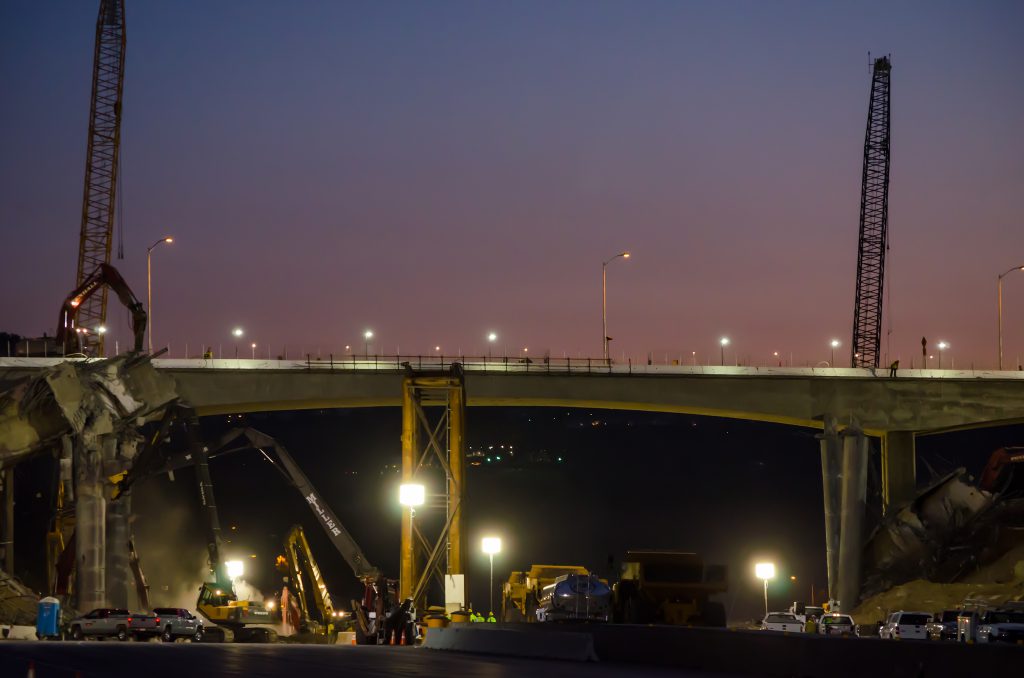
Sourcing steel, aluminum, & other industrial products from the U.S. can help lower carbon emissions.
Environmental advocates, labor unions, Silicon Valley leaders and steel producers are joining forces to support new legislation in California that would add a Buy Clean mandate to state procurement rules.
Assemblymember Rob Bonta (D-Oakland) introduced the Buy Clean California Act (AB 262) on Feb. 1. Co-authored by Assemblymember Susan Talamantes Eggman (D-Stockton), the legislation would require the state to evaluate the greenhouse gas emissions of products purchased with state funds.
It is a first-of-its-kind effort to address climate pollution connected to public infrastructure work, and it has the backing of an eclectic mix of groups, including the United Steelworkers, BlueGreen Alliance and Gerdau, a steel company with facilities in the Golden State.
“This is a powerful example of unity from business, labor and environmental interests to protect our environment from dangerous carbon emissions,” Bonta said in a statement. “California has been a leader in fighting climate change and AB 262 will further demonstrate our resolve by requiring our state government to consider whether products were made in clean or dirty factories when making infrastructure purchases.”
When government officials make bad purchasing decisions — like buying steel from China instead of in the United States — they import high levels of carbon emissions and also create an incentive for domestic manufacturers to move overseas to less regulated countries. Considering the state spends about $10 billion on infrastructure each year, there’s a lot of damage that can be done.
That’s why this new legislation is important. It doesn’t just look at the environmental impact of an infrastructure project while it is under construction on site. Instead, it all starts at the very beginning of a project, when government officials are deciding where to purchase the materials they need.
Take the construction of a new bridge, which requires a lot of steel, iron and concrete to build. The creation of that bridge — and the carbon emissions that go with it — doesn’t start at the bridge site. It begins at the facilities that manufacture the steel, iron and concrete (and frankly, at the sites where the materials to make those things are found). On top of that, all that steel, iron, and concrete needs to be transported to the site of the new bridge.
The United States has the lowest energy intensity and second-lowest carbon dioxide emissions intensity of any major steel producing country. Source: U.S. Department of Energy
A “life cycle assessment” helps evaluate these materials based on how much energy is used in overall production and transportation. American-made steel, iron, concrete, aluminum and other products typically require less energy to produce than their counterparts in countries like China.
The greenhouse gas of most relevance to the world steel industry is carbon dioxide (CO2). On average, 1.8 tons of CO2 is emitted for every ton of steel produced. According to the International Energy Agency, the iron and steel industry accounts for approximately 6.7 percent of total world CO2 emissions.
China releases no official greenhouse gas emissions information like the United States and other developed countries, so research organizations have to make broader assumptions for their estimates. China’s industry emissions have been determined to account for 3.3 percent of all global greenhouse gas emissions. Industry emissions in the U.S. account for 0.59 percent of all global greenhouse gas emissions.
According to the American Iron and Steel Institute, the domestic steel industry has voluntarily reduced its energy intensity by 31 percent since 1990, while reducing its greenhouse gas emissions by 36 percent over the same time period.
The U.S. Department of Energy has indicated that the steel industry in the U.S. has the lowest energy intensity and second-lowest CO2 emissions intensity of any major steel producing country.
But it’s not just steel. According to the Aluminum Association, every ton of aluminum produced in China is at least twice as carbon-intensive as that same metal produced in North America.
Then there’s all the emissions that come from bringing materials into the United States from overseas. Ninety percent of the world’s goods are transported by sea. Shipping currently accounts for 2.2 percent of all greenhouse gas emissions. However, the industry is expected to undergo tremendous growth over the next 35 years.
The International Maritime Organization reports that maintaining business as usual will result in an estimated 250 percent growth in carbon emissions from shipping by 2050. Producing and procuring products close to home is one way to reduce greenhouse gases associated with shipping.
The Buy Clean California Act will help reduce the climate pollution associated with California’s purchase of industrial products. It will allow state agencies to take climate change into account in their planning and investment decisions, employ full life-cycle cost accounting to evaluate and compare infrastructure investments and alternatives.
"California's companies have always led the world in environmental performance, and we know how to do so while making a profit," said Mark Olson, vice president and general manager of Gerdau. "The Buy Clean Bill helps advance our leadership, and will help elevate the environmental performance of industries everywhere."
